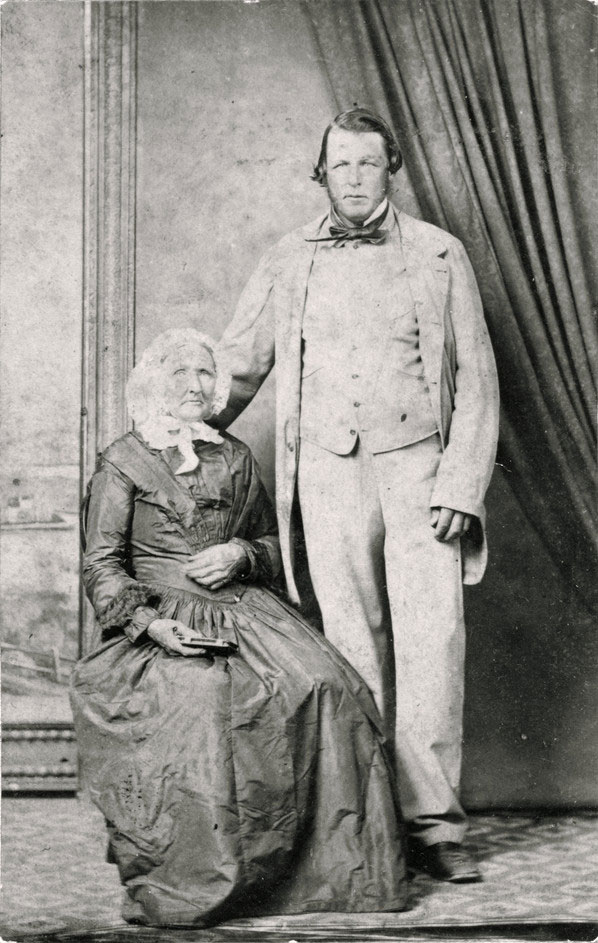Most people think of apples when they think of Granny Smith and most people think of a very worried John Howard when they think of Bennelong – but on the 20th of October, in my local area of Bennelong, the annual Granny Smith festival became the source of some startling new information about a local heroine.

The original Granny Smith was, in fact, more famous in her lifetime for being the local midwife than she was for her now internationally acclaimed green apples. This year, nearly 200 years after Granny Smith strode the streets of Ryde delivering babies, the Ryde midwives and mothers marched in the parade urging passers-by to ‘Begin Life With a Ryde Midwife’ (see pictures). Over 200 years ago starting life with a midwife was considered the only option for women, now we fight to have it considered as “an” option. History I realise is not all about advancement and enlightenment!
 Granny Smith was born Maria Ann Sherwood in the rural parish of Peasmarsh, Sussex, England in late 1799. At the age of 19 she married Thomas Smith and during the next 19 years she gave birth to eight children, five who survived. The Smith family immigrated to Australia, arriving in Sydney in 1838. They bought 24 acres in Eastwood and the Granny Smith Memorial Park marks the southern boundary of the farm. Like many others in the Ryde, Eastwood area the Smiths were orchardists. Granny Smith, best known for being the local midwife, got her title because of her profession. The title granny or granny woman was a name commonly given to women who were midwives. Granny Smith certainly had all the necessary midwifery credentials of the day, having given birth to eight children herself.
Granny Smith was born Maria Ann Sherwood in the rural parish of Peasmarsh, Sussex, England in late 1799. At the age of 19 she married Thomas Smith and during the next 19 years she gave birth to eight children, five who survived. The Smith family immigrated to Australia, arriving in Sydney in 1838. They bought 24 acres in Eastwood and the Granny Smith Memorial Park marks the southern boundary of the farm. Like many others in the Ryde, Eastwood area the Smiths were orchardists. Granny Smith, best known for being the local midwife, got her title because of her profession. The title granny or granny woman was a name commonly given to women who were midwives. Granny Smith certainly had all the necessary midwifery credentials of the day, having given birth to eight children herself.
The Smiths grew fruit for the Sydney markets and Granny Smith also made fruit pies, for which she developed quite a reputation. When her husband fell ill Granny Smith had to take the fruit to market herself. How the original Granny Smith apple came into existence is shrouded in mystery.
Folklore tells us that one day a wholesaler at the Sydney markets gave Granny Smith a box of old crabapples to use in her pies. During her preparations for the pies Granny Smith discarded the crabapple peels and seeds out of the kitchen window. Some months later she found a small apple seedling growing in the compost. An article by Herbert Rumsey in the
Farmer and Settler, dated June 25th 1924, recorded an interview with a local fruit grower, Edwin Small. This man told of being invited, along with his father, by Granny Smith in 1868 to examine the seedling apple growing by a creek on her farm. She apparently told him that the seedling had grown from some French crabapples grown in Tasmania.
This new apple was green instead of red and was not just good for cooking but also excellent for eating. The apples also kept well when properly stored. The Granny Smith apple is known today as a fixed mutation or ‘sport’. When asked how the tree came about she is reported to have said, “Well, it’s just like God to make something useful out of what we think is rubbish”.
Granny Smith died in 1870, so never got to see her apple become famous. It continued to be cultivated by local orchardists, including her children. In 1891, it took out first prize for cooking apples. The apple eventually was grown and exported all over the world. Every year in the month of October when the apples normally are ripe the Granny Smith festival comes to Ryde. This of course now involves much more than apples and even the Ryde Midwives get in on the parade. Granny Smith is buried in St Anne’s cemetery in Ryde, next to her husband.
Today my daughter Lydia’s favourite apple is the Granny Smith. It is often the only constantly healthy source of food in her school lunchbox. My other daughter Bronte goes to childcare at Apple Cottage in the grounds of Ryde Hospital – named so because of all the apples grown in the area and I, of course, am a midwife. If you look hard enough you will find a little piece of history lives in each one of us, somewhere, somehow.
Published 19/10/2012


Recent Comments